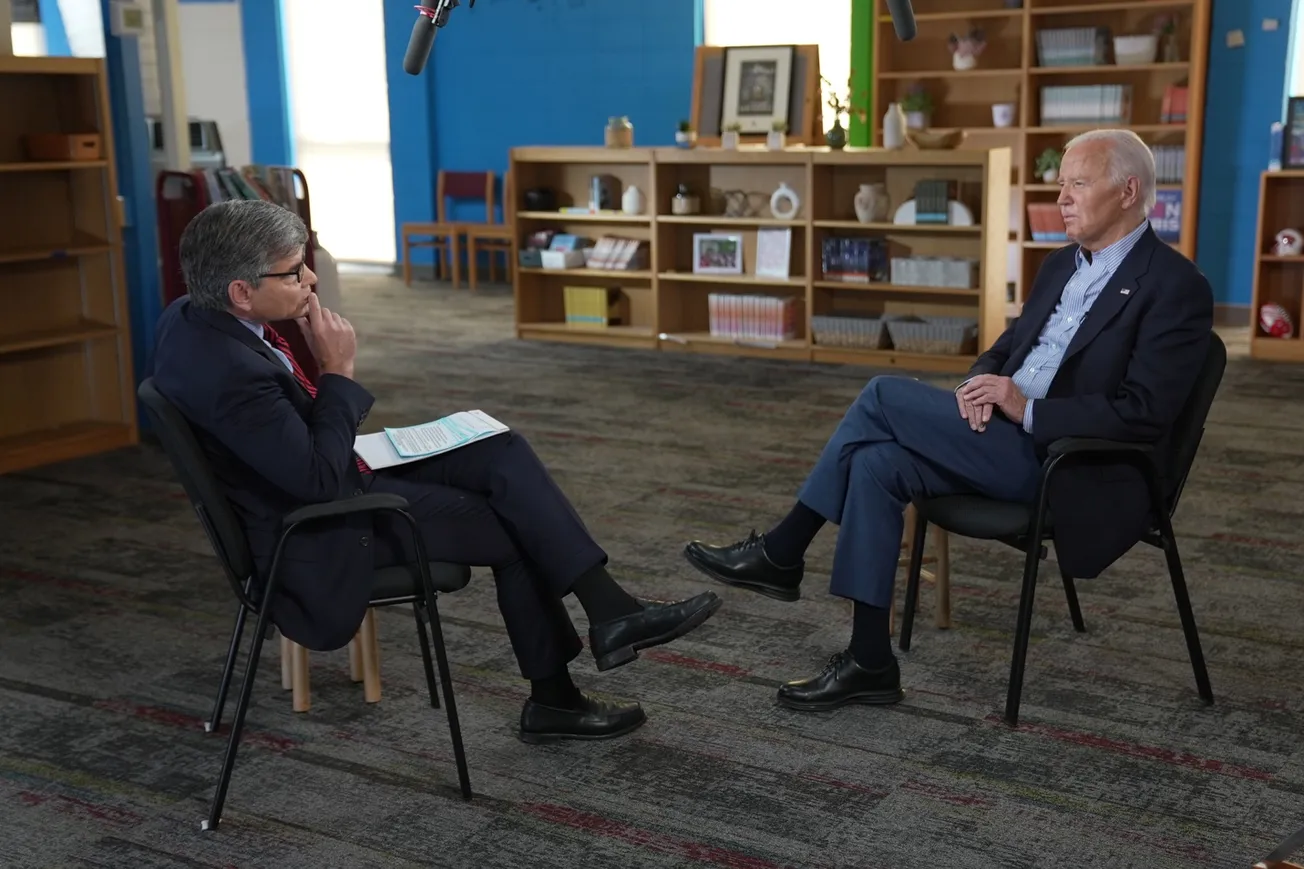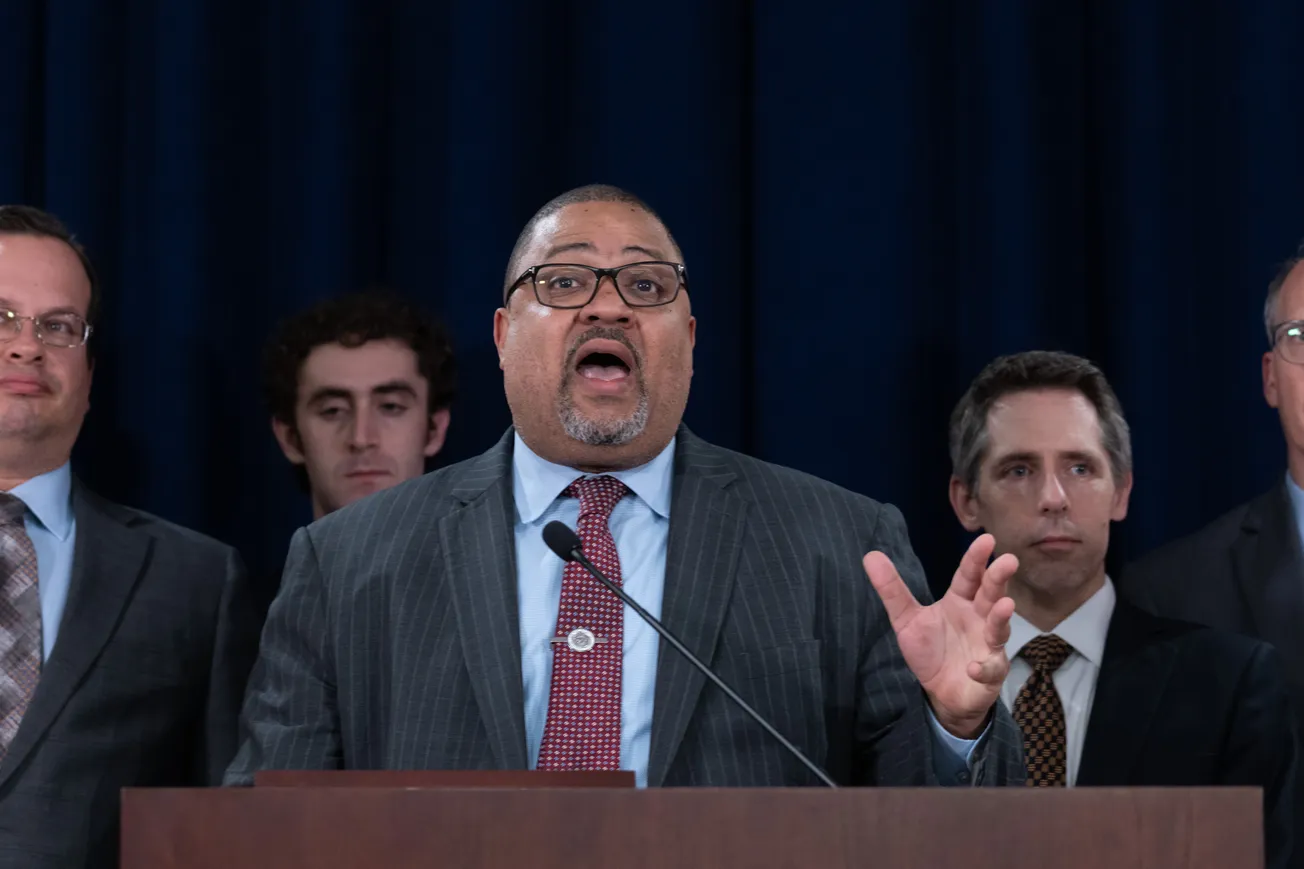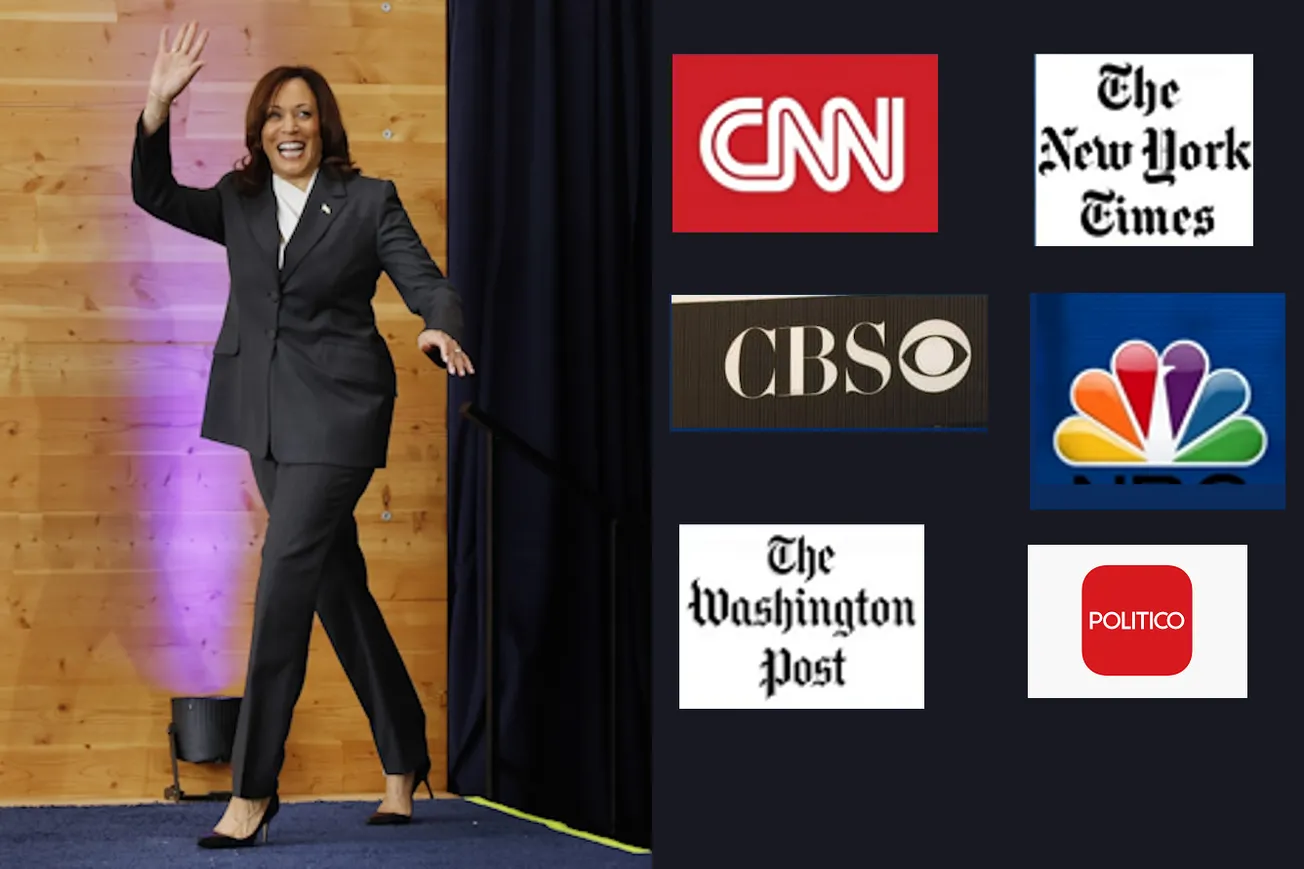For the big media that dominate America's cultural and political life, 2021 was a dismal year when it comes to public trust. The prospects for 2022 are little better, as both the ongoing COVID-19 pandemic, midterm elections and a growing problem with inflation loom. Year-end data from the I&I/TIPP Poll show little public optimism that the media will do a better job this year.
The data for the I&I/TIPP Poll Media Indexes stem from a survey of 1,301 adults, conducted online from Dec. 1-4 by TechnoMetrica Market Intelligence, I&I’s polling partner. The poll’s margin of error is +/-2.8 percentage points.
I&I/TIPP has tracked public opinion on the media since March of 2021. For simplicity's sake, percentages have been converted to an index ranging from zero to 100, which makes for easy comparisons over time. Anything above 50 shows trust, below that, a lack of trust. 50 is neutral.
The year-end 2021 numbers tell a clear tale: The public became profoundly disappointed with the media's performance during 2021.
For example, the I&I/TIPP Traditional Media Trust Index has fallen 15% since its inception last March. That, despite a rebound of 4.5 points, or 11.6%, to 43.3 in December off the record low of 38.8 set in November. This index is made up of major media, such as the Washington Post, New York Times, NPR, CBS News, and so on.
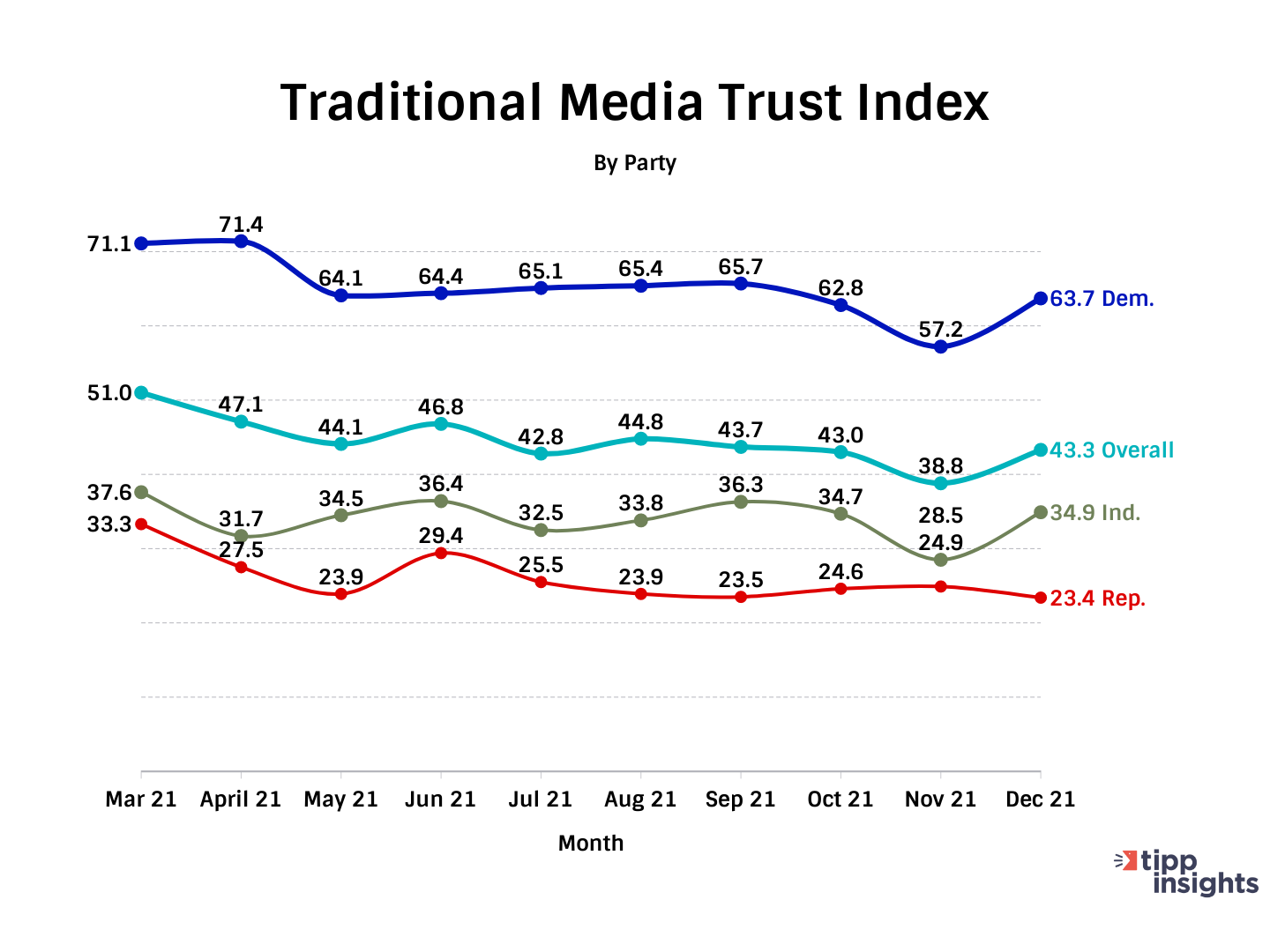
Also, the I&I/TIPP Alternative Media Trust Index has declined 12% over the past 10 months. The overall index rose 3.5 points, or 9.8%, from 35.8 in November to 39.3 in December. This index includes the New York Post, the Washington Times, NewsMax, The Daily Caller and RealClearPolitics, among others.
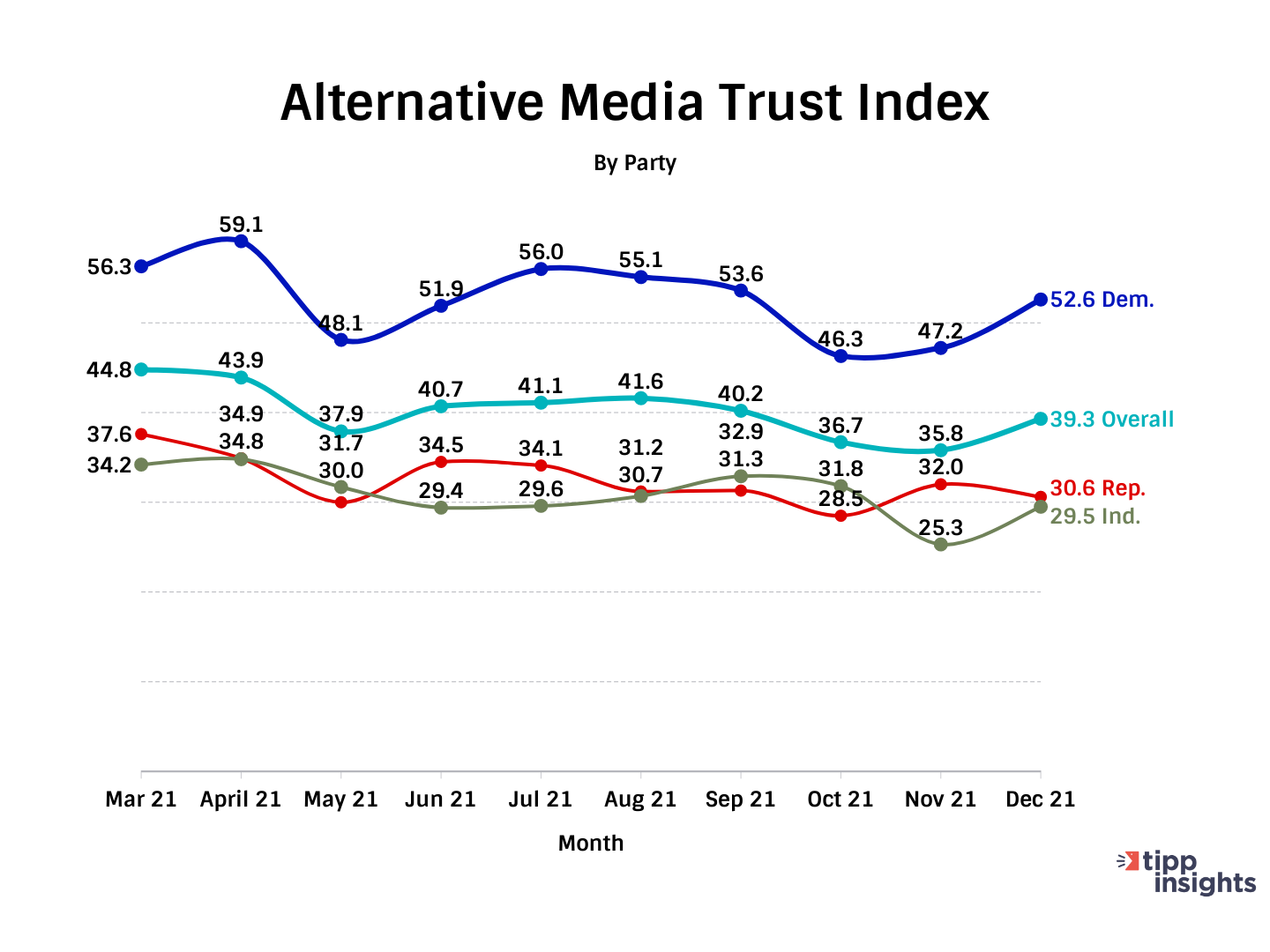
Intriguing splits in opinion emerge from a closer examination of the data.
Those still showing overall trust in the traditional media, for instance, include those living in the Northeast (54.9), people aged 25-44 (55.3), Blacks and Hispanics (51.5), those with incomes above $75,000 a year (59.1), Democrats (63.7), investors (55.2), urban dwellers (56), those with college degrees (50.2), and self-described liberals (61.9).
That bloc of nine groups expressing trust in the traditional media might seem impressive until you realize that all the remaining 25 demographic groups are below the make-or-break 50 level for trust.
Of significant note, Republicans (23.4) and "Independents/Other" (34.9) are both way below the 50 breakeven line. So are suburbanites (39.6) and rural dwellers (32.3). White men (45.0) and white women (33.4) also give low trust scores to the traditional media. So do those who call themselves conservative (32.3) and moderate (44.4).
As for the Alternate Media Trust Index, the pattern is very similar, except all the index numbers tend to be lower. And several groups that express trust for traditional media, don't show the same trust for alternative publications.
For instance, Blacks and Hispanics, which together on the whole indicated trust for the traditional media, gave the alternate media just a 46.2 reading, down 11%, from 51.8 in March. And, perhaps surprisingly, all three ideological groups — conservatives (39.4), moderates (38.1) and even liberals (46.4) — gave failing trust grades to the alternate media.
In 2021, the media were faulted for sloppy, often-biased coverage of such issues as COVID-19, the bungled Afghanistan withdrawal, the January 6 "insurrection," the inflation surge, President Biden's apparent mental acuity problems, and the disastrous Build Back Better bill, among others. No question, the media have a tough hill to climb in 2022 to regain Americans' trust.
I&I/TIPP isn't alone in pointing this out.
The Wall Street Journal, for instance, ripped the media for what it called "The Conformity Crackup of 2021," succinctly noting that "From Covid lockdowns to crime and cops, the political-media consensus was wrong."
Meanwhile, the DailyWire points out that the mainstream media suffered a "Massive Decline In Interest In 2021," citing a number of surveys to bolster its claim.
An Associated Press story, citing Nielsen company data, described a "significant" drop in TV news viewership: "12% at ABC’s “World News Tonight” and the “CBS Evening News;” 14% at NBC’s “Nightly News,” Nielsen said.
Digital news has also suffered, according to data from Comscore: The number of unique visitors to the Washington Post website plunged 44% from November 2020 to November 2021, while the New York Times experienced a 34% decline.
But why is there a sudden drop of such size?
A report from the Media Research Center suggests one major problem: "less than one-fourth (22.3%) of what is aired on cable news could be classified as old-fashioned hard news — just-the-facts reporting or live as-it-happens coverage of an unfolding event." That contrasts with the nearly 80% "of talk-show discussion and opinionated commentary by the anchors."
Moreover, bias is an enormous problem that almost never gets addressed by the media themselves, even if the problem is obvious to readers and viewers.
The Washington Times recently highlighted a startling survey by the Trafalgar Group revealing "that 76.3% of respondents from all political affiliations said that 'the primary focus of the mainstream media’s coverage of current events is to advance their own opinions or political agendas,' compared to only 23.7% who said news media was interested in 'finding and reporting the facts.'"
“People don’t know what’s true and they don’t want to be stupid, but different sources have different answers and it’s hard to figure out where to look anymore,” Robert Cahaly, co-founder of the Trafalgar Group, said. “It’s the hiding of bias that creates distrust. It’s when you present something as ‘down-the-center’ that’s not.”
Is it any wonder that trust in the media is falling so quickly, as the I&I/TIPP Poll indicates?
As the New Year begins, I&I/TIPP plans to continue providing timely and informative data from our monthly polls on this topic and others of interest. TIPP has distinguished itself by being the most accurate pollster for the past five presidential elections.
Terry Jones is an editor of Issues & Insights. His four decades of journalism experience include serving as national issues editor, economics editor and editorial page editor for Investor’s Business Daily.
Please share with anyone who would benefit from the tippinsights newsletter. Please direct them to the sign-up page at:
https://tippinsights.com/newsletter-sign-up/
Please email editor-tippinsights@technometrica.com


